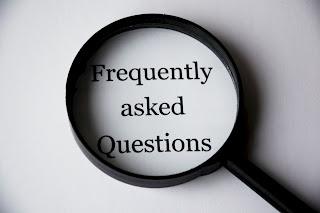
Questions on Basics of Electronics and Transducer
Diode and Diode Circuit
- 1) What
do you mean by dc load line of a transistor? What is meant by Q point?
- 2) What
is need of biasing a transistor?
- 3) Describe
fixed biased, collector to base bias and voltage divider bias circuits with
circuit diagram.
- 4) Draw
and describe input and output characteristics of BJT? What is Early effect in
BJT?
- 5) Differentiate
between CB, CE and CC configurations.
- 6) Sketch
the CE output characteristics and indicate the active, saturation and cut-off
regions.
- 7) Explain
BJT as a switch. Why CB and CC configurations are not preferred.
- 8) Explain
input output characteristics of CE amplifier.
- 9) Explain
working of transistor as a switch
- 10) Explain
how EX-OR gate can be used as an invertor.
- 11) Draw
and describe working of bridge rectifier and derive equations for VDC,
VRMS, IDC & IRMS. Also draw input and
output voltage waveforms.
- 12) Draw and describe working of full wave center tap rectifier and derive equations for VDC, VRMS, IDC,&
IRMS, TUF, FF & rectification efficiency. Also draw input and
output voltage waveforms
- 13) Draw
and describe construction, working of zener diode, tunnel diode, varactor
diode.
- 14) Draw and describe circuit diagram of zener
diode as a shunt voltage regulator.
- 15) Input=5VRMS, Diodes=silicon diodes,
load resistor=2.2 KΩ, calculate, VDC, VRMS, IDC
& IRMS, TUF, FF, & rectification efficiency.
- 16) What is difference between tunnel diode and PN diode?
- 17) What are different applications of varactor diode?
- 18) Write PN diode current equation and describe reverse saturation current.
- 19) Draw waveforms for output voltage, diode voltage, diode current and input voltage of bridge rectifier circuit. Assume silicon diodes.
- 20) Design and draw Zener shunt regulator circuit to meet following specifications- VL=8V, Vin=30V, IL=50mA, Izmin=5mA, Pz=1 Watt. Calculate RLmin, RLmax, & R.
- 21) Half wave rectifier has turns ratio 4:1
with input 240V, 50 Hz supply, Forward resistance of diode (RF)=10Ω,
secondary resistance(RS)= 80Ω and load resistance (RL)=1KΩ.
Calculate VDC, VRMS, IDC & IRMS and
rectification efficiency.
- 22) Full wave centre tapped rectifier has turns
ratio 2:1 with input 230V, 50 Hz supply, Forward resistance of diode (RF)=1Ω,
secondary resistance(RS)= 50Ω and load resistance (RL)=2KΩ.
Calculate VDC, VRMS, IDC & IRMS and
rectification efficiency.
- 23) Bridge rectifier has turns ratio 4:1 with input 230V, 50 Hz supply, Forward resistance of diode (RF)=1Ω, secondary resistance(RS)= 40Ω and load resistance (RL)=3KΩ. Calculate VDC, VRMS, IDC & IRMS and rectification efficiency.
1) Solve
using Boolean laws, theorems,
a. (AB)’+(A+B)’+AB’
b. AC+C(A+A’B)
c. AB+ABC+AB(E+F)
2) Implement
combinational logic for ExOR gate
3) Implement
2:1 mux using NAND gates
4) Implement
following circuits using NOR gates 2:4 decoder, 2:1 Multiplexer
5) Draw
and describe SR latch using NAND gates
6) Describe
JK flip-flop using its state table
7) What
are advantages of JK master slave flip-flop? Describe racing in JK flip-flop?
8) Design
2:4 decoder and describe operation.
9) Draw
and describe 4 bit asynchronous counter
10) Draw
and describe 4 bit shift register in SISO, SIPO, PISO, PIPO modes. Also draw
waveforms.
11) Describe
single bit half adder and full adder.
12) Draw
and explain full adder using two half adder with its truth table
13) Explain
the operation of multiplexer and Demultiplexer.
14) Explain
the UP/Down counter using J-K Flip Flop.
15) Design
the Full adder logic gate using K-Map.
16) Explain
and describe the K-Map.
17) Draw
the schematic diagram & explain working of 4:1 mux and 1:4 demux.
18) Implement
the following with minimum number of NAND gates.
i)
Y=AD+CB
ii)
Z=(A(
19 19)State and prove the de-Morgan’s theorem. Simplify the following Boolean expression: 20) Compare Microprocessor and Micro-Controller
21) Describe following Boolean laws with
examples,
a.
Commutative law
b.
Associative law
c.
Distributive law
22) Describe with example, principle of
duality.
23) What do you mean by combinational logic
circuits? Explain examples.
24) What do you mean by sequential logic
circuits? Explain examples.
Transducer
1) Define
a transducer and sensor.
2) Draw
and describe block diagram of transducer.
3) Classify
transducers
4) What
are various selection criterions of transducer.
5) Describe
possible sources of error in parameter measurement.
6) Draw
and describe construction, transduction principle and working of LVDT,
Ultrasonic transducer.
7) What
is operating principle of flow measurement?
8) Draw
and describe construction working and types of strain gauge.
9) Draw
and describe block diagram of load cell.
10) What
are different types of temperature transducer? Describe RTD and thermocouple in
detail with diagrams.
11) Describe
with diagram construction and working of elastic transducer.
12) Draw
block diagram of digital thermometer and describe working.
13) Draw
block diagram of weighing machine and describe operation.
14) Describe specifications, test conditions and operating conditions of transducer.
15)Draw and explain block diagram of instrumentation system.
16)Explain the Ultrasonic transducer with details.
17)Write short note of: Load cell, Flow measurement and Temperature transducer.
18)What do you mean by Electroluminescence? Describe with figure.

